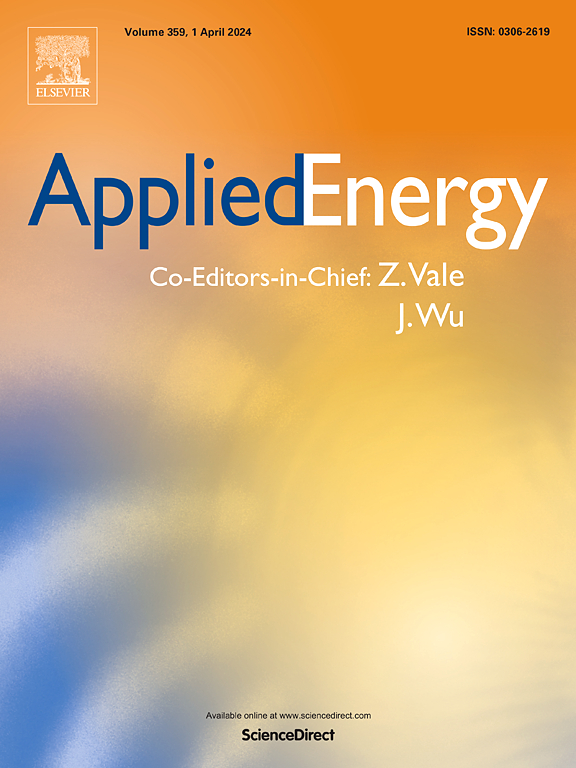从化石燃料转换和基础设施到氢气的转变对全球变暖的影响
IF 11
1区 工程技术
Q1 ENERGY & FUELS
引用次数: 0
摘要
化石燃料开采、运输和燃烧过程中的排放是造成空气污染和气候变化的最重要原因之一,可以说是人类有史以来面临的最严重的危机。从以化石燃料为基础的能源系统向氢的过渡对于实现部分全球脱碳目标至关重要。氢具有某些特性,例如重型运输和货运应用所需的高重量能量密度,以及化学特性,例如钢铁,化学品和化肥行业所需的高温燃烧和还原能力。然而,氢气泄漏有间接的气候影响,源于大气的相互作用,这正在成为一个关键的研究领域。本研究回顾了最近关于氢的全球变暖潜势(GWP)的文献,强调了它通过甲烷延长大气寿命、对流层臭氧形成和平流层水蒸气形成对辐射强迫的间接贡献。据估计,氢的100年全球变暖潜能值(GWP100)在8到12.8之间,强调需要尽量减少整个氢供应链的泄漏,以最大限度地提高使用氢代替化石燃料的气候效益。与甲烷相比,氢的大气寿命更短,长期变暖效应更小,这使它成为钢铁、水泥和重型运输等行业化石燃料的可行替代品。该分析强调了准确的泄漏评估、健全的政策框架和先进的基础设施的重要性,以确保氢实现其作为替代化石燃料使用的可持续能源载体的潜力。未来的研究建议完善气候模型,更好地了解大气汇和氢泄漏现象,并制定有效的策略来减少氢的排放,为环境无害地使用氢铺平道路。本文章由计算机程序翻译,如有差异,请以英文原文为准。
Global warming impacts of the transition from fossil fuel conversion and infrastructure to hydrogen
Emissions from fossil fuel extraction, conveyance, and combustion are among the most significant causes of air pollution and climate change, leading to arguably the most acute crises mankind has ever faced. The transition from fossil fuel-based energy systems to hydrogen is essential for meeting a portion of global decarbonization goals. Hydrogen offers certain features, such as high gravimetric energy density that is required for heavy-duty shipping and freight applications, and chemical properties, such as high temperature combustion and reducing capabilities that are required for steel, chemicals, and fertilizer industries. However, hydrogen that leaks has indirect climate implications, stemming from atmospheric interactions, that are emerging as a critical area of research. This study reviews recent literature on hydrogen's global warming potential (GWP), highlighting its indirect contributions to radiative forcing via methane's extended atmospheric lifetime, tropospheric ozone formation, and stratospheric water vapor formation. The 100-year GWP (GWP100) of hydrogen, estimated to range between 8 and 12.8, underscores the need to minimize leakage throughout the hydrogen supply chain to maximize the climate benefits of using hydrogen instead of fossil fuels. Comparisons with methane reveal hydrogen's shorter atmospheric lifetime and reduced long-term warming effects, establishing it as a viable substitute for fossil fuels in sectors, such as steel, cement, and heavy-duty transport. The analysis emphasizes the importance of accurate leakage assessments, robust policy frameworks, and advanced infrastructure to ensure hydrogen realizes its potential as a sustainable energy carrier that displaces the use of fossil fuels. Future research is recommended to refine climate models, better understand atmospheric sinks and hydrogen leakage phenomena, and develop effective strategies to minimize hydrogen emissions, paving the way for environmentally sound use of hydrogen.
求助全文
通过发布文献求助,成功后即可免费获取论文全文。
去求助
来源期刊

Applied Energy
工程技术-工程:化工
CiteScore
21.20
自引率
10.70%
发文量
1830
审稿时长
41 days
期刊介绍:
Applied Energy serves as a platform for sharing innovations, research, development, and demonstrations in energy conversion, conservation, and sustainable energy systems. The journal covers topics such as optimal energy resource use, environmental pollutant mitigation, and energy process analysis. It welcomes original papers, review articles, technical notes, and letters to the editor. Authors are encouraged to submit manuscripts that bridge the gap between research, development, and implementation. The journal addresses a wide spectrum of topics, including fossil and renewable energy technologies, energy economics, and environmental impacts. Applied Energy also explores modeling and forecasting, conservation strategies, and the social and economic implications of energy policies, including climate change mitigation. It is complemented by the open-access journal Advances in Applied Energy.
 求助内容:
求助内容: 应助结果提醒方式:
应助结果提醒方式:


